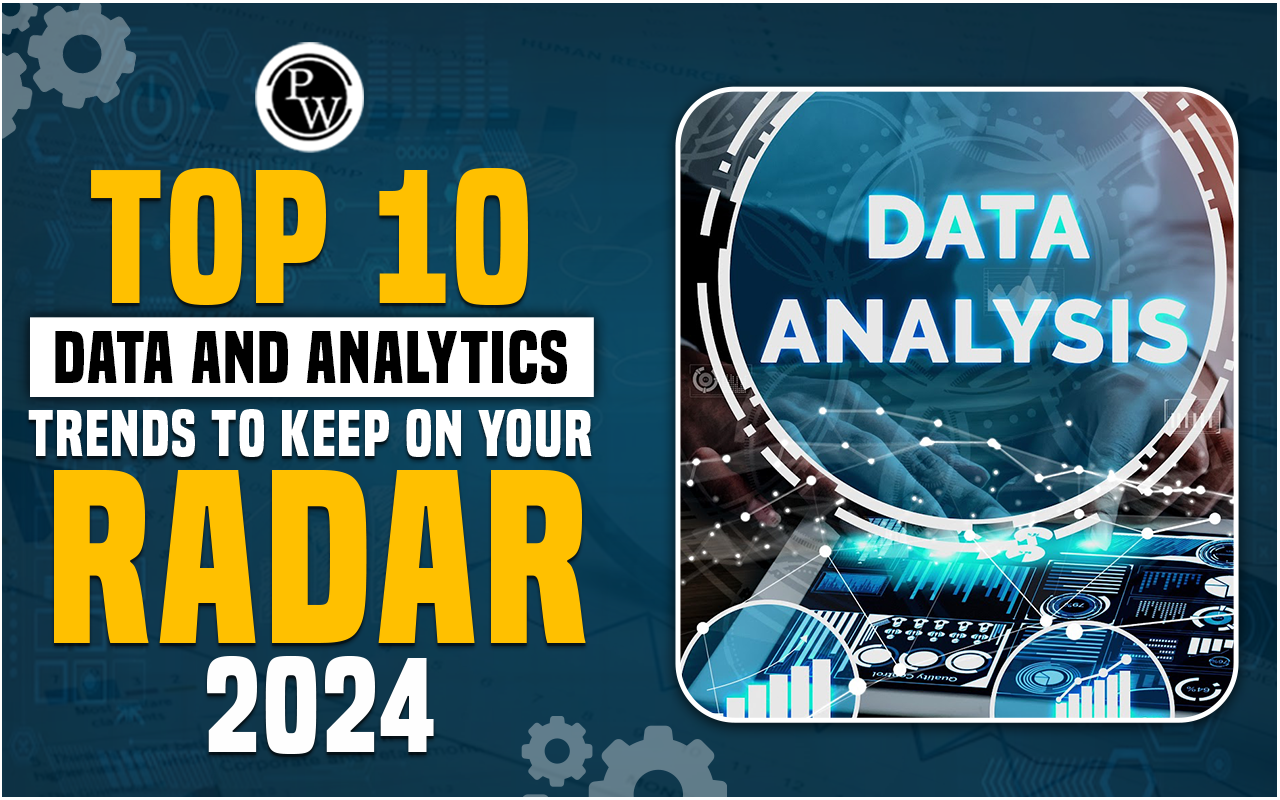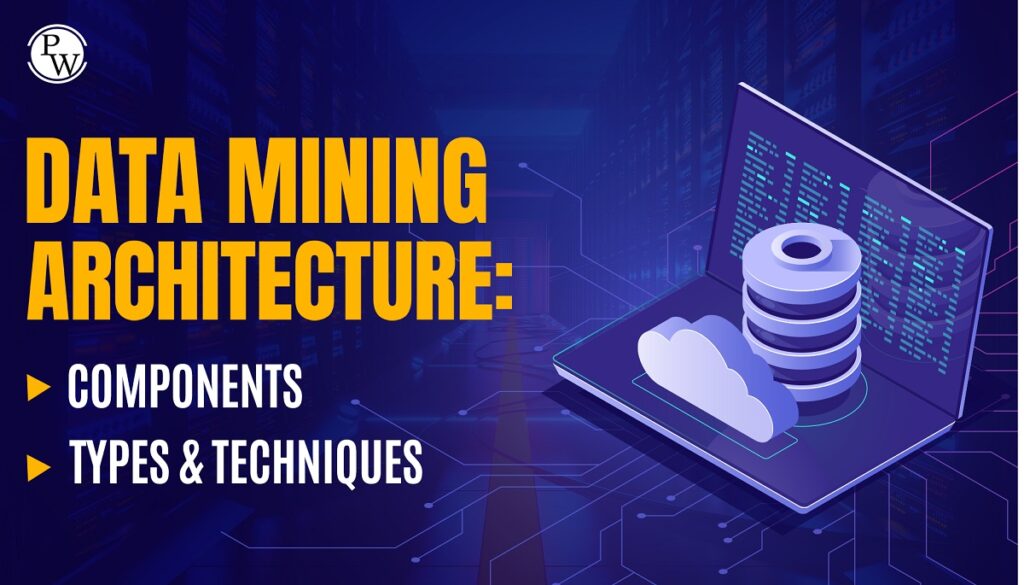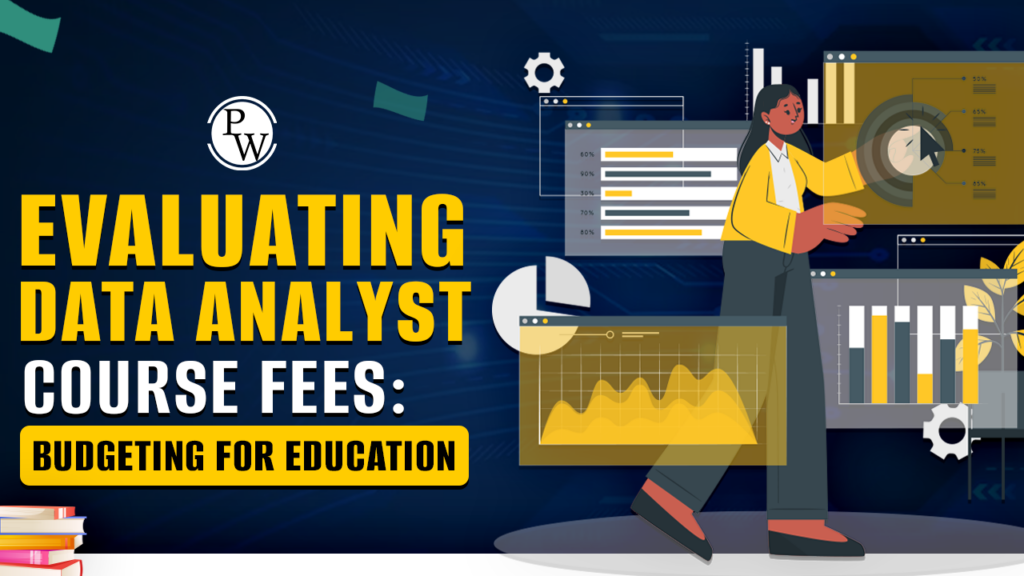Data Analytics Trends: In today’s fast-paced business environment, data and analytics play a pivotal role in shaping strategies, enhancing decision-making processes, and driving overall success. As we approach 2024, the landscape of data analytics continues to evolve at an unprecedented pace, with new technologies and methodologies reshaping the way organizations derive insights from their data. In this blog, we’ll talk about the top 10 data analytics trends that should be on your radar for 2024.
If you want to level-up in your career and want to secure a high-paying job in data analytics, then the PhysicsWallah Full-Stack Data Analytics course is perfect for you. Our course is mentored by the top leaders and talents in the industry. Additionally, our course covers everything you need to learn to secure a high-paying job in data analytics.
Data Analytics Trends in India
The Current Landscape
India, with its diverse and growing economy, is witnessing a rapid integration of data analytics across various industries. In sectors like healthcare, finance, and manufacturing, entities use data insights for smart choices, striving for a competitive advantage. The surge in analytics tools and tech is fueled by more accessible data and a rising awareness of its power.
Despite the progress, challenges persist. Challenges like data quality, a shortage of skilled personnel, and the demand for strong infrastructure hinder smooth analytics integration. Yet, government and private initiatives work to overcome these obstacles, fostering an environment for data analytics growth in India.
Emerging Trends in the Indian Market
AI-Driven Analytics in India
AI and ML integration in Indian data analytics is gaining momentum. Businesses acknowledge AI’s ability to reveal patterns, predict trends, and automate decision-making. Whether it’s optimizing’s supply chains or enhancing customer experiences, AI-driven analytics is becoming a cornerstone of strategic initiatives.
Examples include the use of AI in fraud detection in the financial sector and predictive maintenance in manufacturing. The Indian market is witnessing a shift towards AI-powered analytics tools that enable organizations to extract actionable insights from vast datasets.
Edge Analytics: Bringing Analytics Closer to the Source
Edge analytics is becoming a key player in India, especially in sectors valuing real-time insights. With the surge in IoT devices, edge computing processes data closer to the source, cutting latency and speeding up decision-making. Industries such as healthcare and smart manufacturing are witnessing the transformative impact of edge analytics. In healthcare, for instance, edge analytics facilitates real-time monitoring of patients’ vital signs, allowing for immediate interventions when needed. This trend reflects the growing importance of not just collecting data but analyzing it at the source for timely and relevant insights.
Explainable AI (XAI): Fostering Trust and Transparency
As AI algorithms become more sophisticated, the need for transparency and interpretability becomes paramount. Explainable AI (XAI) is gaining significance in India, where businesses are keen on understanding how AI models arrive at specific conclusions. This trend is particularly relevant in sectors like healthcare and finance, where the stakes are high, and decisions impact lives and livelihoods. XAI ensures that AI-driven insights are not perceived as black-box solutions but are accompanied by explanations that humans can comprehend. This fosters trust among stakeholders and facilitates the responsible deployment of AI in sensitive domains.
Data Governance and Privacy Regulations
With the increasing awareness of data privacy and security, the Indian market is witnessing a growing emphasis on data governance. Regulatory frameworks, such as the Personal Data Protection Bill, are driving organizations to implement robust data governance practices. Businesses are recognizing that effective data governance is not just a compliance requirement but a strategic imperative.
Analytics, in this context, plays a crucial role in ensuring that organizations not only comply with regulations but also leverage data ethically and responsibly. As data becomes a valuable asset, its governance becomes integral to maintaining trust with customers and stakeholders.
Augmented Analytics: Empowering Non-Technical Users
The democratization of analytics is a key trend in India, with augmented analytics playing a pivotal role. Traditional analytics tools often require a high level of technical expertise, limiting their accessibility to data scientists and analysts. Augmented analytics seeks to bridge this gap by integrating natural language processing and automated insights, making analytics tools more user-friendly. In India, where diverse skill sets exist within organizations, augmented analytics empowers non-technical users to derive meaningful insights without extensive training. This trend is particularly relevant in sectors like retail and e-commerce, where decision-makers outside the IT department can leverage analytics for strategic decision-making.
Also read: What is Artificial Intelligence in 2023? Types, Trends, and Future
Data Analytics Trends 2024
While the data and analytics landscape in 2024 is poised for significant transformations, the future trajectory of this dynamic field extends beyond the immediate horizon. As we peer into the future, several emerging trends and technologies are set to redefine the way organisations approach data analytics. These trends not only underscore the continued evolution of existing technologies but also introduce novel concepts that promise to shape the analytics landscape in profound ways.
Advanced Natural Language Processing (NLP)
Natural Language Processing (NLP) has already revolutionized the way humans interact with machines, allowing users to communicate with software using natural language. Looking beyond 2024, we can expect a further refinement and expansion of NLP capabilities. Conversational analytics, driven by advanced NLP, will enable users to engage with analytics tools in a manner akin to conversing with a human analyst. Imagine asking complex analytical questions in plain language and receiving detailed insights in return. This evolution in NLP will not only enhance the accessibility of analytics but also empower a broader range of users, irrespective of their technical proficiency, to derive actionable insights from data.
Evolution of Predictive Analytics: From Accuracy to Precision
The evolution of predictive analytics is an ongoing journey, with advancements in machine learning algorithms and increased access to historical data pushing the boundaries of what is achievable. Beyond 2024, organizations will move beyond traditional predictive models, such as linear regression and decision trees, towards more sophisticated approaches. Ensemble learning, merging forecasts from various models, and deep learning, utilizing neural networks for intricate pattern recognition, will be crucial for predictive analytics. These advanced methods enhance prediction accuracy and empower organizations to refine forecasts, improving decision-making reliability.
Integration of Extended Reality (XR) in Analytics: Immersive Insights
Extended Reality (XR), encompassing virtual reality (VR) and augmented reality (AR), is set to find applications in data analytics beyond 2024. The integration of XR will go beyond enhancing data visualization; it will create immersive analytics experiences that allow decision-makers to interact with data in three-dimensional spaces. In this augmented analytics environment, complex datasets will be transformed into interactive and visually rich landscapes, providing deeper insights and uncovering patterns that may remain hidden in traditional two-dimensional visualizations. XR will bridge the gap between data and decision-makers, fostering a more intuitive understanding of complex analytical insights.
Continuous Emphasis on Data Ethics and Privacy: Safeguarding Trust
As the volume and sensitivity of data continue to increase, the ethical use of data and privacy considerations will remain at the forefront of analytics initiatives. Beyond 2024, organizations will face heightened scrutiny regarding how they collect, store, and utilize data. The emphasis on ethical data practices will drive the development of frameworks and standards to ensure that analytics initiatives align with principles of fairness, transparency, and respect for individual privacy. Emerging technologies, such as federated learning and homomorphic encryption, will play a crucial role in enabling privacy-preserving analytics. These advancements will empower organizations to extract valuable insights from data without compromising individual privacy, fostering trust among customers and stakeholders.
Fusion of Analytics and Sustainability: Towards Responsible Decision-Making
Beyond 2024, there will be a growing intersection between data analytics and sustainability. Organizations will leverage analytics to measure and optimism their environmental impact, assess supply chain sustainability, and make data-driven decisions that contribute to broader environmental and social goals. Sustainable analytics will not only focus on minimizing negative environmental impacts but also on creating positive social outcomes. Analytics will play a pivotal role in aligning business strategies with sustainable practices, fostering a new era of responsible and purpose-driven decision-making.
Quantum Computing: Unlocking Unprecedented Analytical Power
Quantum computing, already noted, is set to significantly influence analytics post-2024. The unparalleled data processing speed of quantum computers, surpassing classical counterparts, holds the potential to revolutionize analytics. Quantum analytics will tackle complex problems, such as optimization and simulation, that are currently infeasible for classical computers. Organizations exploring quantum computing will gain a competitive advantage in solving intricate analytical challenges and deriving insights from datasets of unprecedented size and complexity.
Future Trends in Data Analytics
While the trends outlined for 2024 provide a roadmap for the immediate future, it’s essential to consider the broader trajectory of data analytics. As we look beyond 2024, several emerging technologies and trends are likely to shape the landscape of data analytics.
Advanced Natural Language Processing (NLP)
Natural Language Processing (NLP) has already made significant strides in transforming how humans interact with machines. Beyond 2024, we can expect more advanced NLP capabilities, enabling users to converse with analytics tools in natural language. This development will further democratize analytics, allowing individuals with varying levels of technical expertise to derive insights effortlessly.
Evolution of Predictive Analytics
The evolution of predictive analytics will continue, driven by advancements in machine learning algorithms and increased availability of historical data. Beyond 2024, organizations will move beyond traditional predictive models to embrace more sophisticated approaches, such as ensemble learning and deep learning. This evolution will empower businesses to anticipate trends and make proactive decisions with a higher degree of accuracy.
Integration of Extended Reality (XR) in Analytics
Extended Reality (XR), encompassing virtual reality (VR) and augmented reality (AR), is poised to find applications in data analytics. Beyond 2024, we can expect the integration of XR to enhance data visualisation and immersive analytics experiences. This trend will enable decision-makers to interact with data in three-dimensional spaces, gaining deeper insights and uncovering patterns that may not be apparent in traditional two-dimensional visualizations.
Continuous Emphasis on Data Ethics and Privacy
Data’s surge demands a focus on ethics and privacy. Post-2024, organizations will face heightened scrutiny over data collection, storage, and usage. Ethics will steer the formation of frameworks, ensuring analytics align with fairness, transparency, and privacy principles.
Fusion of Analytics and Sustainability
Beyond 2024, there will be a growing intersection between data analytics and sustainability. Organizations will leverage analytics to measure and optimism their environmental impact, assess supply chain sustainability, and make data-driven decisions that contribute to broader environmental and social goals. This trend reflects the increasing awareness of the role data plays in driving responsible and sustainable business practices.
Data Trends and Patterns
To extract meaningful insights from the vast and varied landscape of data, it is crucial to identify the prevailing trends and patterns that shape the analytics ecosystem. Understanding how data is evolving in terms of accessibility, management, and utilization provides a comprehensive view of the challenges and opportunities that organizations may encounter. Here, we delve deeper into the emerging trends and patterns defining the contemporary data analytics landscape.
Exponential Growth of Data
The digital shift brings unparalleled data generation. Global data volume skyrockets due to connected devices, social media, and digitized processes. This ‘big data’ trend offers opportunities and hurdles. While a vast pool for analysis exists, managing, processing, and extracting insights pose challenges for organizations.
Enhanced Data Security and Privacy Concerns
Growing dependence on data raises heightened worries about its security and privacy. Noteworthy breaches and privacy controversies underscore the critical need to protect sensitive information. Organizations are investing in robust cybersecurity measures and adopting encryption techniques to protect data at rest and in transit. Additionally, the implementation of privacy regulations, such as the GDPR and CCPA, underscores the need for ethical data practices, encouraging organizations to priorities the privacy rights of individuals.
Evolution of Data Storage Architectures: Hybrid and Multi-Cloud Environments
Conventional data storage methods are transforming as hybrid and multi-cloud setups gain prevalence. Organizations are shifting from exclusive reliance on on-premises solutions to embracing a mix of private and public cloud services. This shift enables flexibility, scalability, and cost optimization. Hybrid and multi-cloud architectures empower organizations to strategically store and process data, depending on factors such as workload demands, compliance requirements, and cost considerations.
Real-Time Analytics for Instant Decision-Making
Real-time analytics is now a crucial requirement in the swift-paced business environment. Industries like finance, e-commerce, and healthcare demand instant insights to promptly adapt to market shifts, cater to customer preferences, and address emerging threats. The integration of edge computing, coupled with advancements in analytics tools, enables organizations to process and analyze data at the source, minimizing latency and providing decision-makers with timely and actionable information.
Convergence of Structured and Unstructured Data
While structured data has traditionally been the focus of analytics efforts, the convergence of structured and unstructured data is gaining prominence. Unstructured data, including text, images, videos, and social media content, holds valuable insights that can provide a more comprehensive understanding of business operations and customer behavior’s. Advanced analytics tools, powered by machine learning and natural language processing, are facilitating the integration of both data types, unlocking new dimensions of analysis.
Data Democratization: Empowering Users Across the Organization
Data democratization is a transformative trend aimed at making data accessible to a broader audience within an organization. Traditionally, data analytics was confined to specialized teams, but the democratization movement seeks to empower individuals across departments to leverage data for decision-making. User-friendly analytics tools, self-service platforms, and training programs enable employees with varying levels of technical expertise to interact with and derive insights from data, fostering a culture of data-driven decision-making.
Also read: Essential Data Analytics Tools for Successful Analysis
AI and Machine Learning Integration: Augmenting Human Intelligence
The integration of artificial intelligence (AI) and machine learning (ML) is becoming more prevalent, augmenting human intelligence in the analysis of data. Advanced analytics tools leverage AI algorithms to automate routine tasks, identify patterns, and predict trends. This symbiotic relationship between human expertise and machine intelligence enhances the efficiency and accuracy of data analysis, allowing organizations to glean insights from complex datasets more effectively.
Continuous Emphasis on Data Quality and Governance
As the importance of data for decision-making grows, ensuring data quality and governance becomes paramount. Organizations are recognizing the significance of maintaining accurate, reliable, and well-governed data to derive meaningful insights. Data governance frameworks, data quality assessments, and the implementation of Master Data Management (MDM) systems are integral components of a strategy aimed at establishing and maintaining data integrity.
Collaboration between Data Science and Business Stakeholders
Successful data analytics initiatives hinge on effective collaboration between data science teams and business stakeholders. Breaking down silos and fostering communication between technical and non-technical departments is essential. This collaborative approach ensures that analytics solutions align with organizational goals, are relevant to business needs, and contribute to strategic decision-making.
Rise of Citizen Data Scientists
The rise of citizen data scientists is an offshoot of the data democratization movement. Individuals within non-technical roles are increasingly acquiring data analysis skills, leveraging user-friendly analytics tools to derive insights independently. This trend reduces the dependency on specialized data science teams, allowing a broader range of employees to contribute to the data-driven decision-making process.
Also read: Scope of Data Analytics in the Future 2025
Conclusion
As we stand on the cusp of 2024, the data and analytics landscape is poised for unprecedented growth and transformation. The trends outlined in this article provide a roadmap for organizations seeking to harness the power of data for strategic decision-making. From the evolving landscape of data analytics in India to the anticipated trends in 2024 and the future trajectory of the field, staying informed and adaptable is key to navigating the dynamic world of data and analytics.
Become a data science pro with our comprehensive Full Stack Data Science Pro course. Learn everything you need to know to launch a successful career in this in-demand field, from programming and statistics to machine learning and deep learning.
FAQs
Can hyper automation contribute to cost optimization in analytics initiatives?
Yes, hyper automation eliminates inefficiencies, automates resource-intensive processes, and contributes to cost optimization in analytics.
How does blockchain technology foster transparency in analytics processes?
Blockchain's transparent and auditable nature adds accountability to analytics processes, fostering trust among stakeholders by ensuring the integrity of data transactions.
Are there specific challenges associated with the integration of quantum computing in analytics?
Quantum computing is still in its early stages, and challenges include hardware limitations, error correction, and the need for specialised expertise in quantum algorithms.
How can organisations ensure the responsible deployment of AI in analytics?
Responsible AI deployment involves actively addressing biases, ensuring fairness, and prioritising transparency and accountability in algorithm development and implementation.
Can human-centric design principles benefit decision-makers outside the IT department in India?
Yes, human-centric design makes analytics tools more user-friendly, empowering decision-makers outside the IT department in India to derive meaningful insights.
How can hyper automation contribute to agility in decision-making processes?
Hyper Automation enables real-time data analysis and decision-making, enhancing overall agility by automating routine and complex tasks.
Are there regulatory frameworks in India that emphasise the responsible use of data in analytics?
Yes, India has regulatory frameworks such as the Personal Data Protection Bill that emphasise data governance and privacy, driving responsible practices in analytics.
Can blockchain technology facilitate secure data sharing and collaboration between organisations in India?
Yes, blockchain can provide a secure and transparent foundation for data sharing and collaboration, addressing concerns about data security and confidentiality.
How does quantum computing differ from classical computing in terms of analytical power?
Quantum computing processes data exponentially faster than classical computers, enabling the analysis of complex scenarios in real-time and tackling problems that were once considered infeasible.
How can organisations in India leverage the democratisation of analytics for strategic decision-making?
The democratisation of analytics in India allows decision-makers across various roles and skill sets to access and derive insights from data, contributing to more informed and strategic decision-making.





